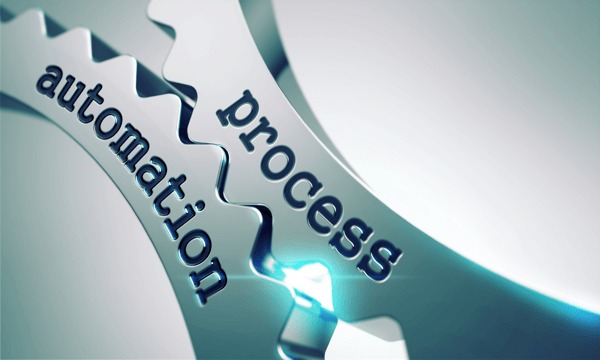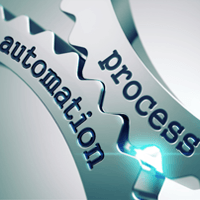Tackling Automation Challenges in Today's Marketing Landscape

Manual tools, like email and pen and paper, are not enough to keep up in today's competitive marketing industry, especially during critical campaigns. Even so, some marketers cling to outdated methods for the most important processes, leaving room for error and miscommunication.
These common enterprise inefficiencies can be resolved through automated workflows, enabling marketers to better serve their company. Through workflow technology, companies can automate repetitive tasks, minimize the risk for errors and prevent documents from falling through the cracks, without the need for micromanaging. Streamlining workflows through automation gives marketers the productivity boost they need to plan and execute promotions faster.
From everyday tasks like client approvals to new client contracts, automation can accelerate digital transformation within the workplace. As businesses move to digitize the workplace, it's important to understand the challenges that can arise and the best ways to alleviate hurdles. The following are challenges marketing departments may experience when implementing automation and recommendations for making it a smooth transition.

Fear of the Unknown
In order to fully benefit from workflow automation adoption, the entire team needs to be on board. Unfortunately, automation is not without its skeptics. Since the industrial revolution, workers have been weary of how technology will impact their jobs. This negative perception of automation can slow down the adoption process. If employees view the technology as something that will inevitably overcomplicate business processes, or they don't understand what they could gain from automation, then they will be far less likely to embrace it.
To ease the fear of the unknown, companies must position automation as a tool that will reduce menial tasks and enable employees to become critical thinkers. Businesses should consider holding coaching sessions and demonstrations so employees can see the results of working with new technology. During these sessions, highlight how common inefficiencies like contract approvals and creative concept feedback can be resolved through automated workflows, enabling marketers to better serve their organization.
It's also important that organizations recognize that knowledge sharing goes beyond an all-company meeting or half-day training session. Supplement in-person communication with an online or easy-access knowledge base that lets employees learn at their own speed, embedding them into the adoption process. The more informational resources that are available for consumption, the more it decreases the likelihood of fear and anxiety during the implementation process.
In the same vein, end users need to be consulted as these educational materials are drafted. The IT department may be the ones establishing the workflows, but marketers will be the ones using the technology. Creating content that consists of IT jargon may make the process seem imposing and overwhelming. By using language in the marketing vernacular instead, it fosters familiarity and a smoother adoption.
Undefined Business Processes
Given the benefits of automation, organizations are often tempted to overhaul all business processes at once. However, a company must have a complete understanding of each step in a specific process before transitioning to automate it. This means it's imperative that companies select only workflows that are well-defined. Focusing on the most clearly documented processes enables businesses to minimize the risk of error that may arise during the adoption process
For instance, most marketing teams conduct content reviews and approvals over email. These processes can require a lot of back and forth between a company and its marketers, increasing the risk of version control mistakes and leaving key individuals out of the review process. With workflow automation, drafts could be systematically routed through the right chain of approvals, eliminating the need for clunky email chains and lost edits.
If a process isn't clearly defined, take the time to review the workflow and make any necessary changes, especially in areas where automation can streamline the process. As workflows move online, be sure to test the effectiveness of automation by comparing it with the manual version. Look for agile tools that can be customized as processes change or as teams provide feedback for areas of improvement.
Getting it Right the First Time
Ultimately, automation will accelerate businesses toward a more digital workplace. By holding the proper training sessions and clearly mapping out workflows beforehand, organizations can overcome common automation adoption obstacles and realize the technology's benefits sooner. Automation will provide companies the leg up needed to outpace competitors, streamline business workflows and bolster employee productivity allowing marketers to focus creativity, collaboration and campaign execution.
 About the Author
About the Author
Erik Severinghaus is the chief strategy and alliances officer at SpringCM. Erik has been developing new products and bringing them to market for 20 years, resulting in hundreds of millions of dollars of exits and revenue generated. Prior to leading strategy at SpringCM, Erik was founder and CEO of SimpleRelevance, a highly acclaimed machine learning platform to optimize digital marketing. In 2015, SimpleRelevance sold to Rise Interactive, where Erik led the Account Strategy and Personalization business units.
Subscribe to Our Newsletter!
Latest in Software








